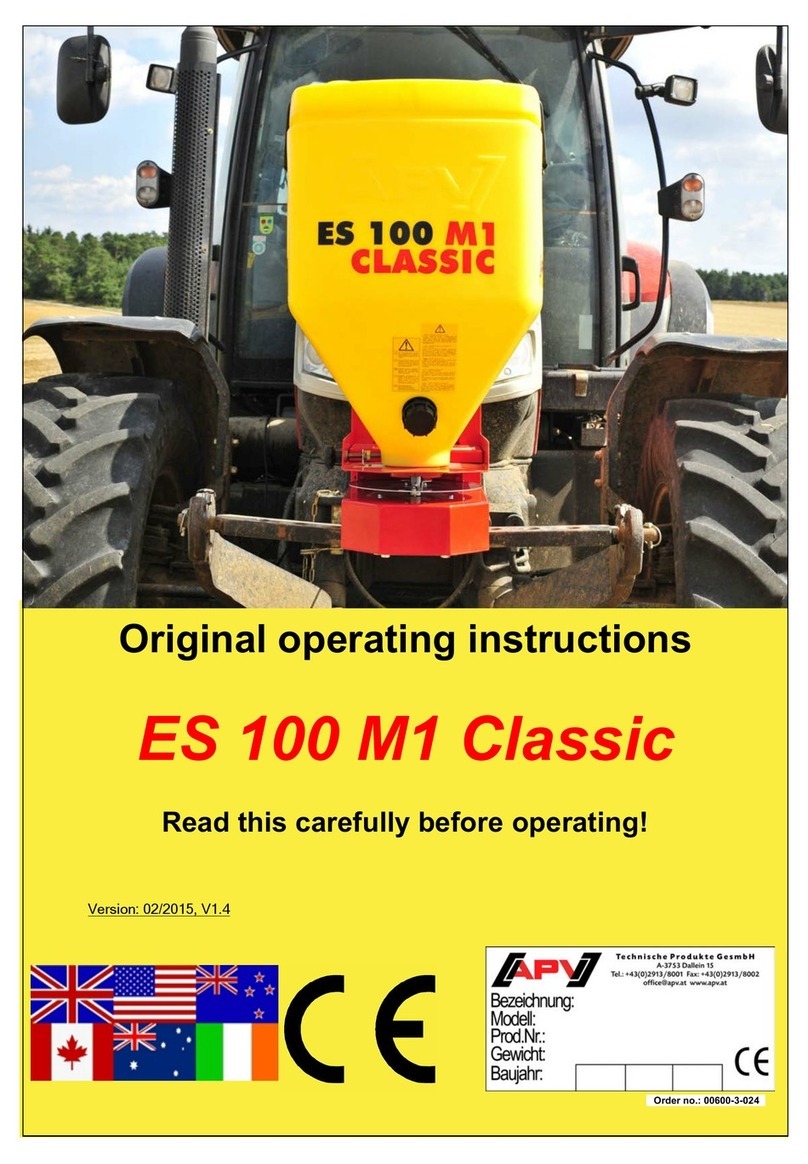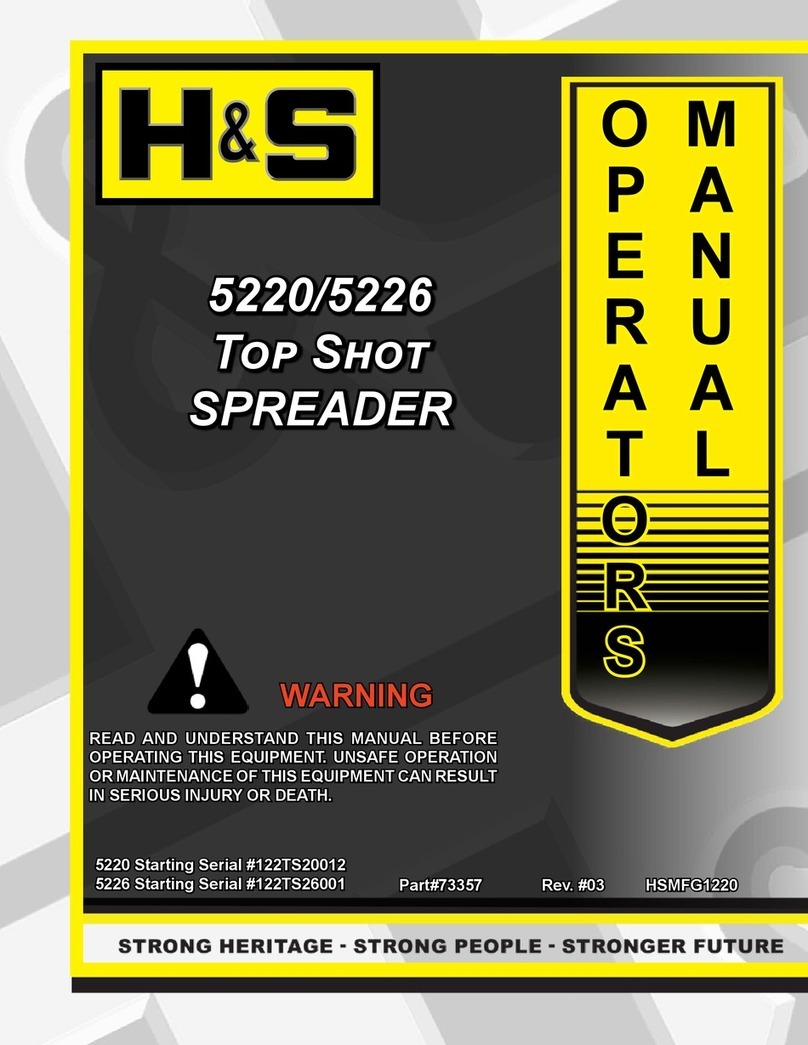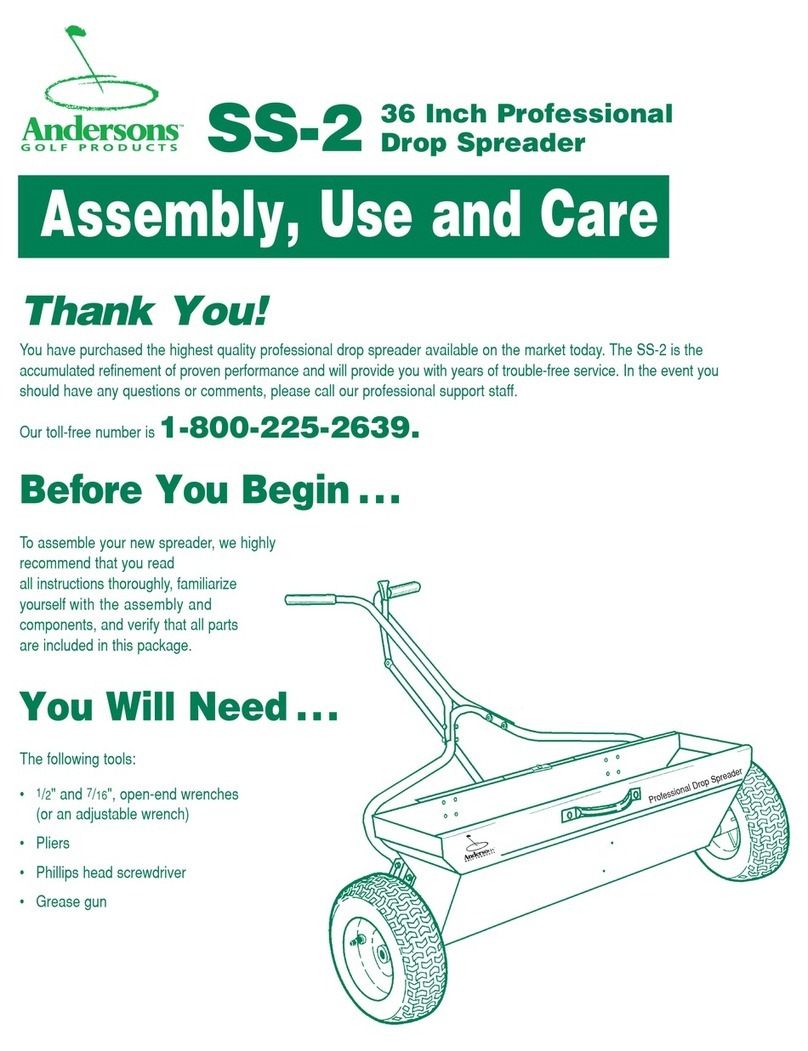
Warranty Statement WS-0716
ROTO-MIX LLC warrants to the original purchaser all products manufactured by it to be free from defects in material and workmanship under normal use and
service.
ROTO-MIX’s obligation under this warranty is limited to repairing or replacing, as the company may elect, free of charge and without charge for installation, at
the place of business of a dealer or distributor authorized to handle the equipment covered by this warranty or at a ROTO-MIX facility, any parts that prove, in
the company’s judgment, to be defective in material or workmanship within one (1) year after delivery to the original purchaser, and still owned by the original
purchaser. This warranty shall in no way make ROTO-MIX liable to anyone for personal injuries or damages, loss of time, or expense of any kind either direct or
indirect resulting from part failure or defect. This warranty is subject to acts of God, fire and existing conditions of supply and demand, or production, or ability
or inability to deliver, or for any other valid reason beyond the reasonable control of ROTO-MIX, to obtain materials, manufactured replacement parts, or make
delivery thereof. No distributor, dealer, agent, or ROTO-MIX employee (other than the CEO or President in writing) is authorized to extend any other or further
express or implied warranty or incur any additional obligation on ROTO-MIX’s behalf in connection with the sale of this product.
If ROTO─MIX, or its duly authorized representative, shall find that such returned part or parts are defective and such defects, or defect, are included in and
covered by said warranty, then such defective part or parts shall promptly be replaced without charge to the purchaser, F.O.B. the ROTO─MIX plant.
Product Registration - It is a condition of this warranty that the original purchaser must fill out the warranty card furnished by ROTO-MIX and that it be returned
to ROTO-MIX within 10 days of purchase and be recorded in ROTO-MIX’s owner file for this warranty to be valid. In the event an owner’s card is not on file at the
ROTO-MIX office, the warranty period will extend only from date equipment was picked up or shipped from the ROTO-MIX plant.
Maintenance - It is the customer’s responsibility to maintain their equipment in accordance with the instructions provided in the Operator’s Manual. ROTO-MIX
recommends that you keep records and receipts; you may be asked to prove that maintenance instructions have been followed.
Operation –It is the customer’s responsibility to operate the equipment only for the purpose for which it was designed and in accordance with all safety and
operational recommendations contained in the Operators Manual. If a defect in materials or workmanship occurs, it is the customer’s responsibility to cease
operating the equipment until authorized repairs are made. Damage, which occurs from continued operation, may not be covered by this warranty.
What this Warranty Covers
This warranty covers failures caused by defects in materials or workmanship only.
This Warranty does not cover failures caused by:
This Warranty does not cover replacement of Wear or Maintenance Items including, but not limited to.
This Warranty does not cover:
-Pickup and delivery of the equipment
-Service Calls or Travel Time to and from sites
-Rental of replacement equipment during repair period
-Products that have been declared a total loss and subsequently salvaged
-Overtime labor charges
-ROTO-MIX is not responsible and will not be liable for damage caused to persons or property, commercial loss, loss of time or production, loss of use by reason
of the installation or use of ROTO-MIX products or their mechanical failure.
Right to Make Changes
ROTO-MIX reserves the right to make any changes to a ROTO-MIX product at any time without incurring any obligation with respect to any product previously
ordered, sold or shipped, with or without notice.
Parts Warranty
ROTO-MIX warranties replacement parts against defects in materials or workmanship for a period of 90 days or the remainder of the product warranty,
whichever is longer. Remedy for defective replacement parts for units that are beyond the original product warranty, will be limited to replacement of the failed
part. Failures that are due to damage, improper installation, lack of maintenance or improper operation will not be covered.
ROTO-MIX 2205 East Wyatt Earp Blvd., Dodge City, KS 67801 (620) 225-1142 Fax: (620) 225-6370
Improper operation
Natural calamities
Unauthorized modifications
Unauthorized repairs
Use of Non ROTO-MIX parts
Neglected maintenance
The use of PTO Shaft Adaptors
Usage contrary to the intended purpose of
the product
lubricants
Filters
Hoses
Tires
Augers
Wipers
Chains
Idlers
Batteries
Blades
Belts
Page 3



























